第24章
Since, then, we are looking for 'originative sources' of perceptible body; and since 'perceptible' is equivalent to 'tangible', and 'tangible' is that of which the perception is touch; it is clear that not all the contrarieties constitute 'forms' and 'originative sources' of body, but only those which correspond to touch. For it is in accordance with a contrariety-a contrariety, moreover, of tangible qualities-that the primary bodies are differentiated. That is why neither whiteness (and blackness), nor sweetness (and bitterness), nor (similarly) any quality belonging to the other perceptible contrarieties either, constitutes an 'element'. And yet vision is prior to touch, so that its object also is prior to the object of touch. The object of vision, however, is a quality of tangible body not qua tangible, but qua something else-qua something which may well be naturally prior to the object of touch.
Accordingly, we must segregate the tangible differences and contrarieties, and distinguish which amongst them are primary.
Contrarieties correlative to touch are the following: hot-cold, dry-moist, heavy-light, hard-soft, viscous-brittle, rough-smooth, coarse-fine. Of these (i) heavy and light are neither active nor susceptible. Things are not called 'heavy' and 'light' because they act upon, or suffer action from, other things. But the 'elements' must be reciprocally active and susceptible, since they 'combine' and are transformed into one another. On the other hand (ii) hot and cold, and dry and moist, are terms, of which the first pair implies power to act and the second pair susceptibility. 'Hot' is that which 'associates'
things of the same kind (for 'dissociating', which people attribute to Fire as its function, is 'associating' things of the same class, since its effect is to eliminate what is foreign), while 'cold' is that which brings together, i.e. 'associates', homogeneous and heterogeneous things alike. And moise is that which, being readily adaptable in shape, is not determinable by any limit of its own: while 'dry' is that which is readily determinable by its own limit, but not readily adaptable in shape.
From moist and dry are derived (iii) the fine and coarse, viscous and brittle, hard and soft, and the remaining tangible differences.
For (a) since the moist has no determinate shape, but is readily adaptable and follows the outline of that which is in contact with it, it is characteristic of it to be 'such as to fill up'. Now 'the fine' is 'such as to fill up'. For the fine' consists of subtle particles; but that which consists of small particles is 'such as to fill up', inasmuch as it is in contact whole with whole-and 'the fine'
exhibits this character in a superlative degree. Hence it is evident that the fine derives from the moist, while the coarse derives from the dry. Again (b) the viscous' derives from the moist: for 'the viscous' (e.g. oil) is a 'moist' modified in a certain way. 'The brittle', on the other hand, derives from the dry: for 'brittle' is that which is completely dry-so completely, that its solidification has actually been due to failure of moisture. Further (c) 'the soft'
derives from the moist. For 'soft' is that which yields to pressure by retiring into itself, though it does not yield by total displacement as the moist does-which explains why the moist is not 'soft', although 'the soft' derives from the moist. 'The hard', on the other hand, derives from the dry: for 'hard' is that which is solidified, and the solidified is dry.
The terms 'dry' and 'moist' have more senses than one. For 'the damp', as well as the moist, is opposed to the dry: and again 'the solidified', as well as the dry, is opposed to the moist. But all these qualities derive from the dry and moist we mentioned first.' For (i) the dry is opposed to the damp: i.e. 'damp' is that which has foreign moisture on its surface ('sodden' being that which is penetrated to its core), while 'dry' is that which has lost foreign moisture. Hence it is evident that the damp will derive from the moist, and 'the dry' which is opposed to it will derive from the primary dry. Again (ii) the 'moist' and the solidified derive in the same way from the primary pair. For 'moist' is that which contains moisture of its-own deep within it ('sodden' being that which is deeply penetrated by foreign mosture), whereas 'solidigied' is that which has lost this inner moisture. Hence these too derive from the primary pair, the 'solidified' from the dry and the 'solidified'
from the dry the 'liquefiable' from the moist.
It is clear, then, that all the other differences reduce to the first four, but that these admit of no further reduction. For the hot is not essentially moist or dry, nor the moist essentially hot or cold: nor are the cold and the dry derivative forms, either of one another or of the hot and the moist. Hence these must be four.